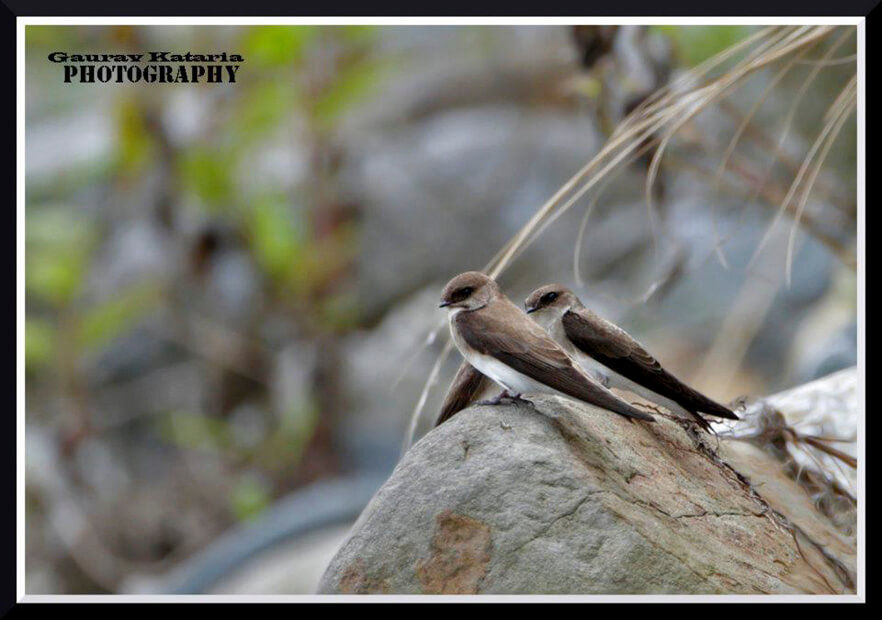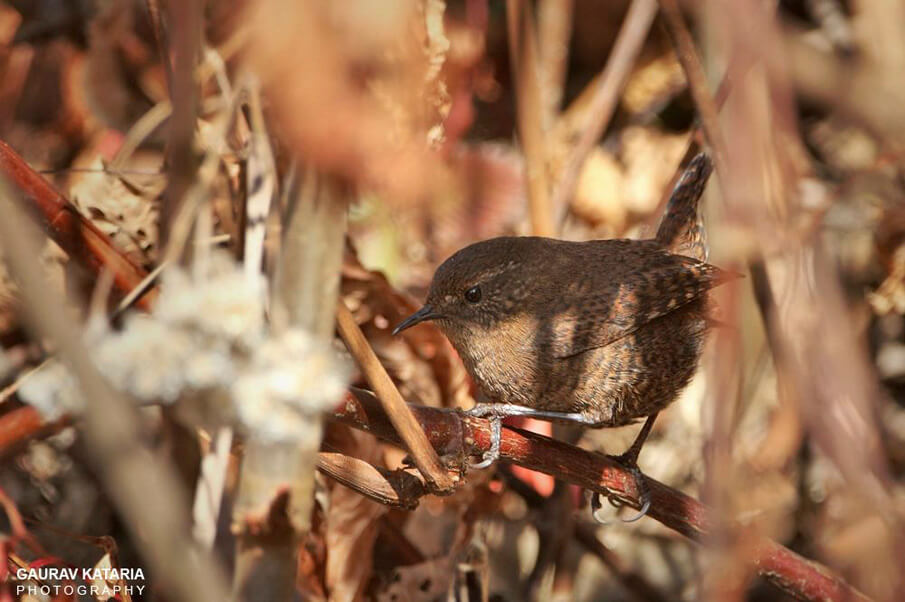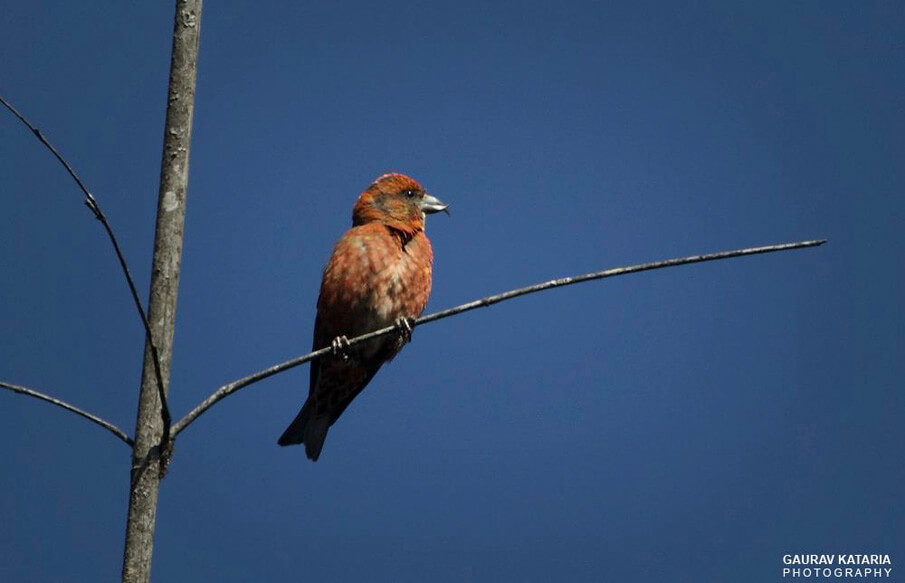Guwahati – Nameri National Park - Kaziranga National Park
06 Days / 05 Nights
Our Nameri Kaziranga Short Birding Tours targets two of the best national parks of Assam for hundreds of rare bird sightings and plenty of wildlife adventure. Those who prefer a bit of thrill in their birdwatching would love this short birding trip in the north-eastern state of Assam. Over a span of just six days
Booked as per
request.
Included except arrival and departure city.

Private guide for complete tour.
Airport to Airport.
2-8PAX
Included
Our Nameri Kaziranga Short Birding Tours targets two of the best national parks of Assam for hundreds of rare bird sightings and plenty of wildlife adventure.
Those who prefer a bit of thrill in their birdwatching would love this short birding trip in the north-eastern state of Assam. Over a span of just six days, we take you, first, to Nameri National Park, and then to Kaziranga National Park. We go on multiple wildlife safaris and long birding walks to mark off lots of rare, exotic, endangered and popular birds of Northeast India, particularly Assam.
Nameri National Park is home to 375 bird species, many of which are out in large numbers in winter and spring season. For one full and two half days, we explore the birding trails of Nameri to look for the likes of White-winged Duck (state bird of Assam), Blyth’s Kingfisher, Great Thick-knee, Mallard, Great Crested Grebe ,River Tern, Greater Yellownape, Peregrine Falcon, Black-winged Cuckooshrike, Common Iora, Sand Lark, Pin-striped Tit-Babbler, Abbott's Babbler, White-rumped Shama, Golden-fronted Leafbird, Collared Scops-Owl, Yellow-browed Warbler, River Lapwing, Asian Barred Owlet, Great Hornbill, Blue-throated Barbet, Red-breasted Parakeet, Ashy Woodswallow and many more.
Besides birdwatching, Nameri National Park throws up stunning views of wildlife, such as tiger, leopard, elephant, hog deer, sambar, gaur and Indian giant squirrel.
Birdwatching at Kaziranga National Park adds more adrenaline edge to your Assam birding adventure. As many as 450 bird species flutter about in this biodiversity hotspot deservingly designated as an Important Birding Area and UNESCO World Heritage Site.
Morning and afternoon wildlife safaris at Kaziranga reveal to us the park’s incredible bird diversity. The Kaziranga bird checklist is long enough to leave one spoilt for choice, but the prized sightings include those of Bengal Florican, Lesser Whistling Duck, Grey lag Goose, Ruddy Shelduck, Gadwall, Eurasian Wigeon, Northern Pintail, Ferruginous Duck, Asian Openbill, Woolly-necked Stork, Greater and Lesser Adjutant, Eastern Great Egret, Intermediate Egret, Spot-billed Pelican, Northern Lapwing, Grey-headed Lapwing, Green-billed Malkoha, Asia-barred Owlet, Large-tailed Nightjar, Black-billed Roller, White-throated Kingfisher, Blue-naped Pitta, Common Iora, Grey-backed Shrike, Black-hooded Oriole, Cinereous Tit, Barn Swallow, Swamp Francolin, Red-whiskered Bulbul, Smoky Warbler, Yellow-browed Warbler, Puff-throated Babbler, White-browed Scimitar Babbler, Slender-billed Babbler, Greater-necklaced Laughingthrush, White-vented Myna, White-rumped Shama, and Taiga Flycatcher.
For two-and-a-half days, we scour the birding trails of Kaziranga for many more avian beauties. If lucky, we may also catch sight of one-horned rhinos and Bengal tiger, apart from lots of wildlife that roams about in Kaziranga.
INDIA BIRDING TOUR has designed the Short Birding Tours of Nameri and Kaziranga to pack in maximum bird sightings over the course of just six days to give you total bang for your buck and time.
Lodging: Throughout our birding adventure of Nameri and Kaziranga, we stay at resorts in or around the aforementioned national parks. These accommodations not just provide quality service, but have great locations from a birding point of view. Even at an odd hour, you may spot a few avian beauties from your window or balcony.
Meals: Both Indian and western meals are on the menu of the resorts we stay at. Despite the remote location of these resorts, the variety – vegetarian and meat – is diverse enough for you to try out something new every night. Lunches are often taken in the field to avoid any long breaks in birdwatching. The meals are delicious and made hygienically.
Tour Difficulty: Our short birdwatching tour of Assam puts no great demand on your body. The jeep safaris are as comfortable as they come. The birding walks are done in a terrain that’s easy to navigate. Occasionally, these walks may turn out long because of great bird sightings. You should be able to put in the legwork while carrying your birding equipment such as camera, binoculars and backpack, etc.
Tour Extension: The safaris in Kaziranga National Park may whet your hunger for wildlife adventure. In such a case, we may punch in a visit to Manas National Park, a Project Tiger reserve in Assam. For those wishing to see more birds, we may include birding expedition to Assam’s Dehing Patkai region, which is India’s largest stretch of tropical lowland forests. Whatever tour extension you want, just let us know in advance.
Climate: The best time to do birding in Assam is from October to April. These are winter and spring months before the onset of the monsoon summer rains. The temperature in winter is pleasantly cold between 8 to 25 degrees Celsius. The spring season is a bit warmer but never scorching hot. Do carry appropriate clothing for the weather, and pack in a raincoat as well for an odd shower.
Getting There: The tour kicks off in Guwahati, Assam. Guests flying in from abroad can arrive in Delhi or Kolkata and then take a flight or train to Guwahati. Guests from India have the option of taking either flights or trains from their starting point.
The birding tour of Nameri and Kaziranga begins at Assam’s biggest city Guwahati. Upon your arrival, our tour guide or representative meets you at Guwahati airport and takes you straightaway for a Short Birding Tours of Guwahati. Though a bustling town, Guwahati still has a few places on its outskirts where one may see an interesting variety of birds. Our target for this short tour is Greater Adjutant Stork.
Freshened by this birding stint, we hit the highway for a 5-hour cab ride to Nameri National Park. We have our lunch at a roadside restaurant and arrive at our destination by evening, with a few hours to spare for some local birding.
Nameri National Park is situated in the foothills of the Himalayas, on Assam’s border with Arunachal Pradesh. It lies just below the sprawling Pakhui Wildlife Sanctuary of Arunachal Pradesh and this geographic bounty makes Nameri a thriving habitat of birds of Northeast India. It is also a tiger reserve with a lot of other wildlife such as leopard, elephant, hog deer, sambar, gaur and Indian giant squirrel. Our evening excursion is a short one after which we retire for the night to our resort in Nameri.
Nameri National Park is accessed by ferrying across the river Jia-Bhoroli, which flows along the southern boundary of the park. Crossing the river, one enters a biodiversity hotspot of semi-evergreen deciduous forests, bamboo brakes, and sporadic grasslands, which are home to a variety of flora and fauna, including 375 species of birds.
Quite early in the morning, we take a boat to cross the river and enter the park. We do birding walks on a selected stretch of the park and look for the likes of White-winged Duck (state bird of Assam), Blyth’s Kingfisher, Great Thick-knee, Mallard, Great Crested Grebe ,River Tern, Greater Yellownape, Peregrine Falcon, Black-winged Cuckooshrike, Common Iora, Sand Lark, Pin-striped Tit-Babbler, Abbott's Babbler, White-rumped Shama, Golden-fronted Leafbird, Collared Scops-Owl, Yellow-browed Warbler, River Lapwing, Asian Barred Owlet, Great Hornbill, Blue-throated Barbet, Red-breasted Parakeet, Ashy Woodswallow, Hair-crested Drongo, Cinereous Tit, Puff-throated Babbler, Black-throated Thrush, Asian Brown Flycatcher, Pygmy Flycatcher, Little Pied Flycatcher, Scarlet-backed Flowerpecker, Crimson Sunbird, Small Pratincole, Slaty-backed Flycatcher, Snowy-browed Flycatcher, Little Ringed Plover, Wreathed Hornbill, Plain Flowerpecker, Rosy Pipit, Fulvous-breasted Woodpecker, Streaked Spiderhunter, Pied Falconet, Long-tailed Broadbill, Sultan Tit, Daurian Redstart, Ferruginous Duck, Gray-hooded Warbler, Green-billed Malkoha, Banded Bay Cuckoo, Bengal Bushlark, Black-backed Forktail, Chestnut-bellied Rock-Thrush, Ibisbill, Lesser Sand-Plover, Striated Babbler, Green-winged Teal, Black-breasted Thrush, Black-crowned Night-Heron, Speckled Piculet, Yellow-vented Warbler, Pin-tailed Snipe, Crested Goshawk, Brown Fish-Owl, Gray-bellied Tesia, Buff-chested Babbler, Pale-chinned Blue Flycatcher, Little Spiderhunter, Scaly Thrush, Eurasian Sparrowhawk, Ruby-cheeked Sunbird, Rufous Woodpecker, Black-naped Monarch, Slaty-blue Flycatcher, Sapphire Flycatcher, Spot-winged Starling, Orange-breasted Green-Pigeon, Dusky Warbler, Slaty-bellied Tesia, Wood Sandpiper, Dark-sided Flycatcher, Pied Harrier, Gray-chinned Minivet, Siberian Rubythroat, Pallas's Gull, Amur Falcon, Chestnut-crowned Warbler, Lesser Necklaced Laughingthrush, Greater Necklaced Laughingthrush, Ruddy Kingfisher, Striated Grassbird, Silver-backed Needletail, Asian Openbill, Thick-billed Green-Pigeon, Savanna Nightjar, Whiskered Tern, Rufous-bellied Eagle, Blossom-headed Parakeet, Hooded Pitta, Pale Blue Flycatcher, Spot-billed Pelican, Blue-winged Minla, Yellow-vented Flowerpecker, Ashy Bulbul, Red-headed Trogon, Hen Harrier, Buff-barred Warbler, Gray-cheeked Warbler, White-spectacled Warbler, White-browed Piculet, White-cheeked Partridge, Besra and Ibisbill.
After a busy day of birding at Nameri, we dine and overnight at the resort.
We begin the day with a Short Birding Tours around Nameri to look for the missing birds in our checklist and then drive for 2 hours to Kaziranga National Park. We check into a resort and take a short break for lunch before heading out for an afternoon safari in the park.
Kaziranga National Park is a UNESCO World Heritage Site and one of the best wildlife reserves of India. Among its many attractions are the one-horned rhinos, Indian elephants, swamp deer, Asiatic water buffalo and, the most sought-after of them all, the tiger. But what makes Kaziranga indispensable to our Short Birding Tours of Assam is its diverse avifauna. The park hosts more than 450 species of birds and we hope to see several dozens of them on our first afternoon safari at Kaziranga. The coming days will see us doing multiple such safaris.
In the evening, we return to our resort for dinner and overnight.
Kaziranga National Park is a designated Important Birding Area by BirdLife International. During the day, we do two wildlife safaris in Kaziranga, one in the morning and another in the afternoon.
Our bird targets during these safaris are Bengal Florican, Lesser Whistling Duck, Grey lag Goose, Ruddy Shelduck, Gadwall, Eurasian Wigeon, Northern Pintail, Ferruginous Duck, Asian Openbill, Woolly-necked Stork, Greater and Lesser Adjutant, Eastern Great Egret, Intermediate Egret, Spot-billed Pelican, Northern Lapwing, Grey-headed Lapwing, Green-billed Malkoha, Asia-barred Owlet, Large-tailed Nightjar, Black-billed Roller, White-throated Kingfisher, Blue-naped Pitta, Ashy Wood Swallow, Common Iora, Grey-backed Shrike, Black-hooded Oriole, Cinereous Tit, Barn Swallow, Swamp Francolin, Red-whiskered Bulbul, Smoky Warbler, Yellow-browed Warbler, Puff-throated Babbler, White-browed Scimitar Babbler, Slender-billed Babbler, Greater-necklaced Laughingthrush, White-vented Myna, White-rumped Shama, Taiga Flycatcher, Little Pied Flycatcher, Finn’s Weaver, Brown-headed Gull, Greater Spotted Eagle, Himalayan Griffon, Black-necked Stork, Garganey, Red-crested Pochard, Spotted Redshank, Pallas’ Fish Eagle, Indian spot-billed Duck, Common Coot, Lesser whistling Duck, Tufted duck, Ruddy Shelduck, Little Cormorant, Eurasian Wigeon, Black Baza, Peregrine Falcon, Osprey, Grey-headed Fish Eagle, Western Marsh Harrier, Rose-ringed Parakeet, Blossom-headed Parakeet, Greater Coucal, Stork-billed Kingfisher, Pied Kingfisher, Blue-bearded Bee-eater, Oriental Pied Hornbill, and many more.
Dinner and overnight at Kaziranga resort.
Kaziranga National Park is quite big and divided into four ranges: Baguri in the west, Kohara in the centre, Agaratoli in the east, Biswanath in the north. Our birding tour of Kaziranga targets different ranges on different days. We go on morning and afternoon safaris at Kaziranga again and look for more birds in different areas.
We look out for the likes of Fulvous-breasted Woodpecker, Streak-throated Woodpecker, Long-tailed Minivet, Brown Shrike, Black-hooded Oriole, Black Drongo, Rufous Treepie, Velvet-fronted Nuthatch, White-vented Myna, Green Imperial-Pigeon, Lesser Coucal, Large-tailed Nightjar, Asian Palm-Swift, River Lapwing, Oriental Honey-buzzard, Brown Fish-Owl, Oriental Pied-Hornbill, Oriental Dollarbird, Coppersmith Barbet, Blue-eared Barbet, Red-breasted Parakeet, Large Cuckooshrike, Striated Grassbird, Striated Babbler, Chinese Rubythroat, Black Redstart, Daurian Redstart, Scarlet-backed Flowerpecker, Golden-fronted Leafbird, Rosy Pipit, Brown Hawk-Owl, Scarlet Minivet, Clamorous Reed Warbler, Black-crested Bulbul, Yellow-browed Warbler, Dusky Warbler, Blyth's Leaf Warbler, Pin-tailed Snipe, Cotton Pygmy-Goose, Marsh Sandpiper, Pallas's Gull, Pale-chinned Blue Flycatcher, Pin-striped Tit-Babbler, Baya Weaver, Crimson Sunbird, Asian Emerald Dove, Indian Cuckoo, Golden-headed Cisticola, Thick-billed Warbler, Bluethroat, Lesser-necklaced Laughingthrush, Forest Wagtail, Snowy-browed Flycatcher, Whistler's Warbler, Asian Brown Flycatcher, Little Pied Flycatcher, Red Avadavat, Pied Falconet, Dark-necked Tailorbird, Pygmy Flycatcher, Bengal Bushlark, White-throated Bulbul, Buff-chested Babbler, Rufous-necked Laughingthrush, Hen Harrier, Ruby-cheeked Sunbird, Asian Emerald Cuckoo, Short-toed Snake-Eagle, Pied Harrier, Yellow-bellied Prinia, Oriental Skylark, Red-headed Vulture, White-rumped Vulture, Hodgson's Hawk-Cuckoo, Red-necked Falcon.
Dinner and overnight at the resort in Kaziranga.
After breakfast, we hit the highway to Guwahati. It’s a 200-km ride through a beautiful landscape and takes up to 4 hours. Upon our arrival in Guwahati we drop you at the airport or railway station for your onward journey. Our Nameri Kaziranga short birding holiday comes to an end.


